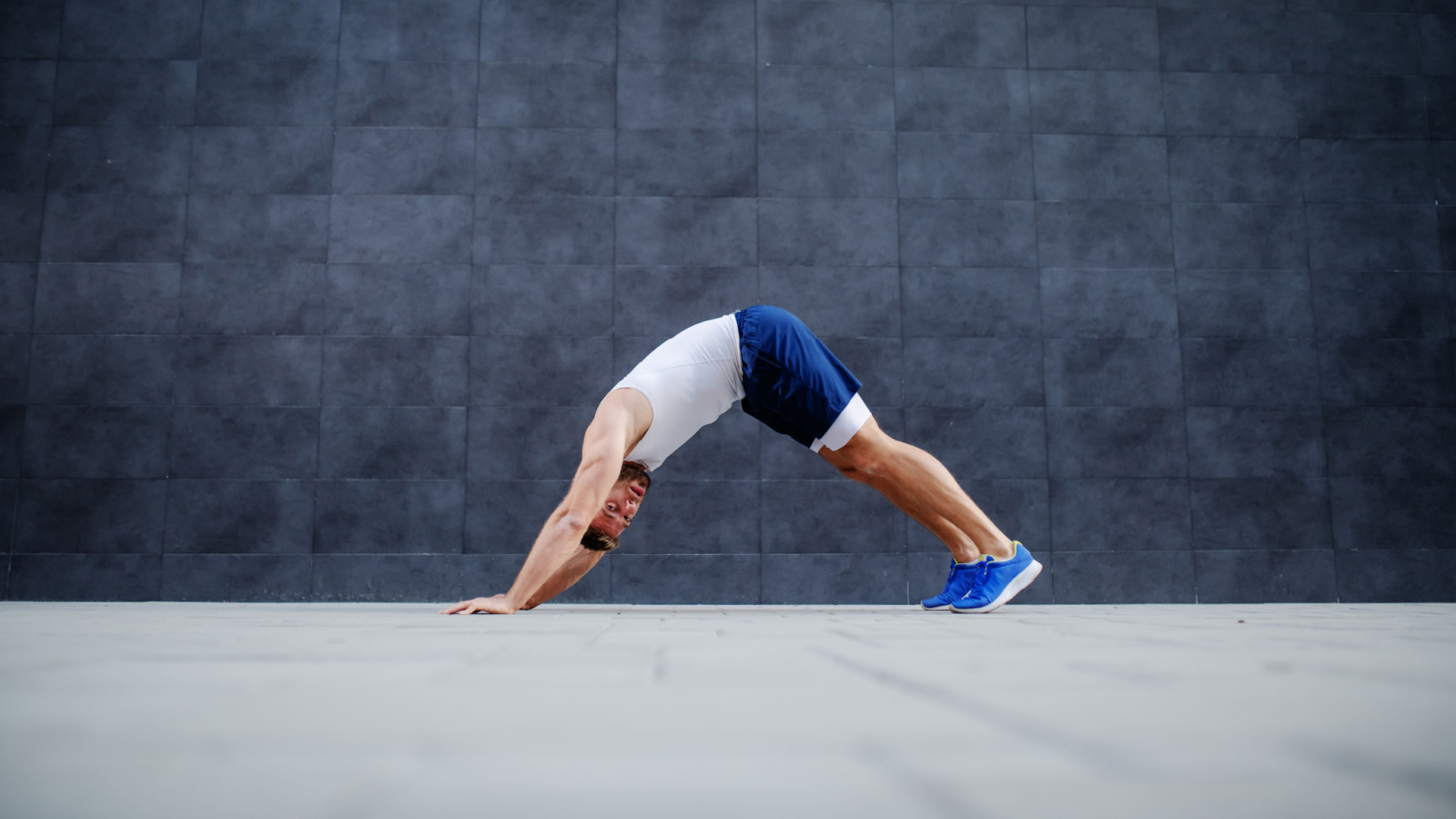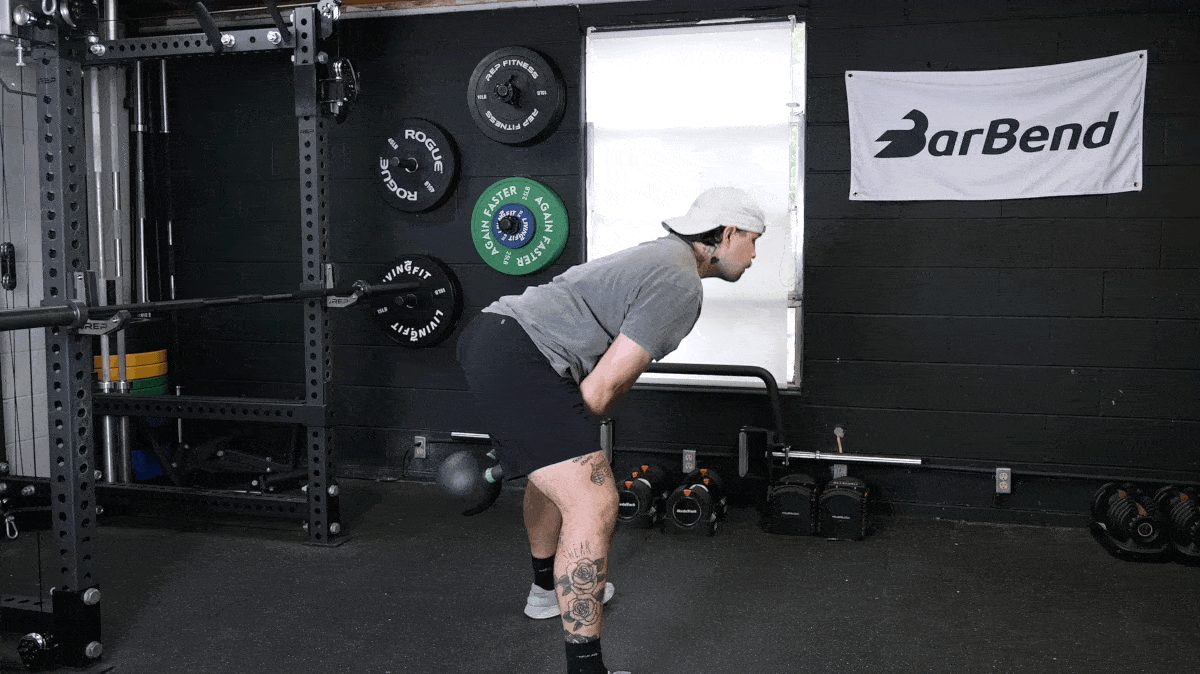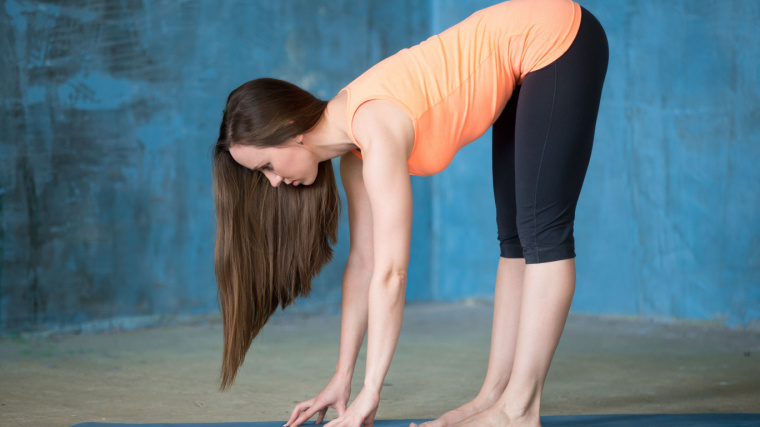Fitness
How To Do the Inchworm Exercise Correctly (+ Guides and Tips) | BarBend

When it comes to warm-up exercises and drills, the good ol’ KISS principle — that’s “keep it simple, stupid” — applies. Sure, there are times when you might need to break out a specific movement to tackle a nagging injury or warm-up a particularly stubborn joint before your exercise session.
But if you just need to break a sweat, get flexible, and prepare yourself for the workout to follow? Put the resistance bands back where you found them. Your body is a tool; use it like one. The inchworm exercise is your go-to all-in-one primer for functional, healthy movement.
Oh, and it has a slew of other benefits that make it a worthy inclusion into your training routine. Here’s how to do the inchworm exercise.
How To Do the Inchworm
The inchworm is a simple, all-in-one dynamic bodyweight exercise that works as both a warm-up or a main movement in your workout plan. Here’s how to do it.
[Read More: The 20 Best Leg Exercises for Muscle and Strength]
- Step 1 — From an upright position, hinge over at the hips and reach down to the floor with your hands
- Step 2 — Place your palms on the floor in front of your feet, then slowly “walk” your hands out forward across the floor.
- Step 3 — Continue walking forward with straight legs until you come to a straight-armed plank position.
- Step 4 — From there, “walk” your feet up again towards your hands until you’re back in the starting position.
Inchworm Variations
Unfortunately, the inchworm isn’t the most customizable exercise out there. You can make some minor modifications to it, but there aren’t a wide variety of variations to the inchworm. Here are two options you can utilize with a resistance band:
Inchworm With Elbow Band
[Read More: The 12 Best Women’s Multivitamins]
- Fasten a thin band around your elbows, right above the joint on your upper arm.
- Then, perform the inchworm as you normally would, actively contracting your upper back to place mild tension across the band by deliberately spreading your arms.
Inchworm With Knee Band
- Fasten a thin band around your knees, above the joint on your lower thigh.
- Then, perform the inchworm as you typically would. Contract your glutes to gently push your knees outward and apply tension to the band.
Inchworm Alternatives
The inchworm is great for mobilizing your posterior chain, taxing your core, and testing your shoulder stability all at once. While the dynamic nature of the movement makes it hard to capture all of those benefits at once, you can try some of these inchworm alternatives and get a similar result:
Kettlebell Swing

[Read More: The 12 Best Supplements for Muscle Growth]
- Stand upright holding the handle of a kettlebell in both hands with a slightly-wider-than-hip-width stance.
- Hinge at the hips and allow the kettlebell to swing backward between your legs as you tip over.
- Thrust your hips forward aggressively and let the momentum carry the bell out in front of your body.
- Once the bell reaches its apex, let it fall naturally and return to a hinged position, sweeping it back between your legs once again.
- Get into a rhythm and let the force from your hips repeatedly swing the kettlebell back and forth.
Hanging Leg Raise
[Read More: The 15 Best Upper Ab Exercises for a Stronger Core]
- Find a pull-up bar and hang freely from it with a shoulder-width grip.
- With straight legs, contract your core and flex your abs to raise your legs up and forward until they’re at least parallel to the ground.
- Hold for a beat at the top and then reverse the motion.
Who Should Do the Inchworm
The inchworm is a versatile movement in its own right. You can plug it into the start of your warm-up routine and it’ll benefit the forthcoming workout no matter what you’re training for. If you fall into one of the following categories, consider giving the inchworm a go:
CrossFitters
CrossFit workouts contain a wide array of different exercises and movement patterns. As such, your warm-up should be both dynamic and specific to the task at hand. You need a mobile posterior chain, activated core, and flexible shoulders for almost every CrossFit or functional fitness training session.
Strength Athletes
Strength training may entail lifting heavy weights, but you shouldn’t just stroll into the gym and head right to the squat rack. A good warm-up can prime you for optimal performance with the barbell, and that starts by raising your core temperature and mobilizing your joints.
Try the inchworm out for a few sets before a bodyweight deadlift workout and you should find things move a bit smoother and the relevant musculature is more engaged than if you had simply spent 10 minutes on the treadmill.
If You Work Out at Home
One of the biggest drawbacks of home workouts is that you’re limited in your exercise selection by the equipment you have on-hand. You’ll usually need to get creative with your calisthenics training and employ bodyweight moves like the inchworm instead.
[Read More: The 15 Best Home Gyms]
The inchworm works your core, shoulders, and posterior chain — all of which can sometimes be difficult to target with typical home fitness equipment like dumbbells or resistance bands.
Inchworm Sets and Reps
As the inchworm is a bodyweight-only movement, you can’t really approach it with the same set-and-rep scheme as you would for weighted exercises. However, there are a few different ways you can utilize it to your advantage:
- To Warm Up: Try 3 rounds of 5 inchworms back-to-back.
- As a Cool-Down: Do 3 rounds of 3 inchworms with a slow tempo, really taking your time to stretch out the relevant muscles.
Benefits of the Inchworm
The inchworm has a surprising amount of utility. You can use it to warm-up, to get a quick stretch in while you’re traveling, or as part of your accessory or cool-down routine.
Full-Body Flexibility
The inchworm is rare in its ability to mobilize both your upper and lower body simultaneously. Bending over to touch the floor and walk your hands out will lengthen your hamstrings and lumbar spine, while moving into the straight-arm plank will stretch out your shoulders.

[Read More: The 16 Best Pre-Workout Supplements]
This makes the inchworm a fantastic warm-up drill ahead of a full-body workout where you’re using multiple joints at once.
It Has a Simple Technique
You can’t underestimate the value of a bodyweight mobility drill that has an intuitive, straightforward technique. The inchworm can be learned in just a few minutes, making it a great plug-and-play option. When you’re in a hurry, you need movements that you can pick up and utilize right away instead of spending multiple sessions mastering the technique in the first place.
Versatility
As your fitness goals evolve and change, your workouts should progress as well. This usually means adjusting your accessory routine or dynamic warm-up exercises, but you don’t have to remove the inchworm along the way.
Because of its wide-ranging applicability and ease of access, you can use the inchworm for just about any fitness goal in the right context. It works as a standalone movement to mobilize your joints or as a primer before more specific training like powerlifting or gymnastics.
Muscles Worked by the Inchworm
The inchworm works just about every muscle in your body to some degree. Here are the major muscle groups that are most relevant when you perform the exercise:
Core
As you walk your hands out in the inchworm, your core bears more and more load until you’re in the straight-armed plank position. This taxes your abdominals isometrically. Your abs work on some level to stabilize your trunk for the entire duration of the inchworm.
Shoulders
As you descend into the inchworm, your arms gradually move upward until they’re in line with your torso. This motion is called shoulder flexion, and will tax the tissues around your shoulder blade, forcing them to relax and open up. This makes the inchworm a great way to improve your overhead mobility before a pressing workout or if you feel tight or restricted in your thoracic region.
Hamstrings
The inchworm exercise involves lengthening the muscles in your posterior chain. Principally, your hamstrings, which run from your shin bone across your knee and hip and attach onto your pelvis.

[Read More: The 13 Best Quad Exercises for Serious Strength and Size]
Tight hamstrings can inhibit all kinds of movement in certain situations. The inchworm serves as a low-intensity way of opening up your posterior chain ahead of a workout that requires you to use those muscles through their full range of motion.
Common Inchworm Mistakes
The inchworm may be less complex than, say, a snatch or overhead squat, but that doesn’t mean there aren’t still mistakes you can make along the way. Steer clear of these common errors:
Bending Your Legs
The inchworm works as a posterior chain lengthener, but only if you can maintain a straight leg throughout the first portion of the movement. You’ll have to bend your knees a bit to walk your feet up towards your hands in the second half, but in the first phase of the movement try to keep your knees as straight as possible.
Rushing Your Movement
This movement is equal parts dynamic warm-up drill and active stretch — the worst thing you can do is rush through the inchworm and execute it with poor form. You won’t be at any risk of injury by doing so, but you should really take your time and feel your body stretching out as you move through the drill if you want to reap the maximum benefits from it.
More Training Content
FAQs
Does the inchworm have you all knotted up? No worries. Here are some common questions about the exercise and their answers.
The inchworm exercise is a dynamic warm-up and mobility tool. Most people use it to stretch out the muscles in their posterior chain ahead of a hard workout, or after bouts of travel.
For the most part, yes. The inchworm will activate the muscles in the backs of your legs, your torso, your shoulders, and your core primarily.
Doing the inchworm will work your shoulders, core, and posterior chain through a large portion of their range of motion, making it a fantastic full-body movement.
Featured Image: Dusan Petkovic / Shutterstock

Fitness
Fans of fitness influencers exercise more – but they’re also more depressed

Fans of fitness influencers are more likely to be depressed despite exercising more, according to a study.
According to a new study published in the Cyberpsychology Journal, young adults who follow fitness influencers on social media are physically healthy. Results show that participants reported a disproportionately higher amount of “vigorous exercise” as well as fruit and vegetable intake. However, participants also reported poorer mental health.
The survey saw 1,022 young adults aged 18 to 35 surveyed from May to November 2021 from three different English-speaking countries in various ways: New Zealand looked at students from the University of Orago, the US used Amazon’s Mechanical Turk, and the UK received their results through surveyor, Prolific. Researchers selected these countries for their high social media use, and focused their attention on Instagram use, primarily due to its substantial user population among young adults.
Ultimately, the study found that young adults who actively follow fitness influencers on Instagram are more likely to report engaging in vigorous exercise and consuming more fruits and vegetables than non-followers, suggesting more healthy lifestyles. However, they also reported higher levels of both mental distress and greater well-being than people who didn’t follow the influencers. Researchers believe that this indicates that this demographic of young adults is vulnerable to fitness and food-related compulsive behaviors, including eating disorders.
The researchers noted a marked difference between followers and non-followers, with the latter having a healthier mind-body relationship as they practiced vigorous exercise compared to those who vigorously exercised and followed the influencers. They attributed these results to be consistent with previous findings in other studies on the negative effects of following Instagram influencers.
The study cited a January 2024 systematic review of 12 intervention studies that looked into how social media influencers sharing health information or Instagram images fitting the ideal can affect the minds of those following them. Researchers found that the majority of participants were negatively impacted, with many reporting unhealthy food intake, mood, and poor body image.
By enforcing the so-called “fit ideal,” fitness influencers may encourage “compulsive levels of exercise and obsessions with healthy or pure diets,” also known as orthorexia, according to the study. Internalizing what they see on their social media feeds or their favorite influencer’s espousing can lead to poorer body image, especially if the person is motivated to get healthier or follow a regimen purely for appearance-related motivations.
Researchers suspect that appearance-motivated exercising may increase the likelihood of poorer mental health among those who follow health influencers. Social comparison and damaging intentions can contribute to feelings of depression, anxiety, and negative body image.
Fitness
Julianne Hough In Exercise Gear Is “Just Working On My Fitness”

Dancing With the Stars host Julianne Hough is incredibly disciplined when it comes to her health and fitness regimen. Hough, 35, shared a video of herself wearing black shorts and a matching sports bra, doing a kettlebell workout at the gym. She also does a mat workout and uses dumbbells. “Up in the gym just working on my fitness 😜,” she captioned the post. “Hot stuff hot haircut,” commented Chelsea Handler. Here’s how Hough is thriving in her 30s.

Hough relaxes with wine and friends. “I love unwinding with people on a lake, having a glass of wine and playing games, because the sense of community feeds my soul,” she told E! News. “I also love my space and unwinding on my own.”
Hough knows how important exercise is for mental health and wellness. “The more you move, it directly affects the way you feel,” she told E! News. “Whether it’s a Kinrgy class or doing Pilates or yoga, the fact that we get to combine all of those modalities is my favorite because I love versatility… I need a little bit of something different and unique so that my brain stays active.”
Hough is an accomplished and talented dancer. “I have been fortunate enough to try so many different forms of expression over the years but dance has always been the beginning and end for me. I will always come back to dance. This year I made an intention and concerted effort to bring dance back into my life through really challenging myself artistically and athletically. Training! Zoi was a person and choreographer that I have been a fan of for years and that I felt was going to test my limits as that artistic athlete and dancer and I was not wrong. I hope you enjoy this piece. This is the first of more to come ✨” she captioned an Instagram post.
Hough believes in a holistic approach to health and fitness. “This is the age of energetic health,” she told E! News. “Because if you can change your energy, then you can change your mindset, and then you can change your physicality. We’ve been going about it the other way, which is: If I’m physical, then my body is going to look good. But if you focus more on your energy, then you get fitness as a plus.”
Hough needs to move her body at least once a day to feel her best. “I know that I can walk around the hills with my dog,” she told E! News. “That’s key because I have to get her out, too. But movement in general, whether it’s 10 minutes or five minutes of something, I have to move my body.”
Fitness
Embrace Movement: National Health and Fitness Day tips | Watch News Videos Online

Get ready to lace up your sneakers and join the movement because Shahzadi Devje is here to pump up your enthusiasm for National Health and Fitness Day! She discusses the benefits of exercise on overall happiness and the power of community in staying active. Plus, she unveils an exciting community challenge with fantastic prizes up for grabs.
-

 News1 week ago
News1 week agoRead the I.C.J. Ruling on Israel’s Rafah Offensive
-

 News1 week ago
News1 week agoVideo: Protesters Take Over U.C.L.A. Building
-

 World1 week ago
World1 week ago€440k frozen in Italy over suspect scam by fake farmers
-

 World1 week ago
World1 week agoHoping to pave pathway to peace, Norway to recognise Palestinian statehood
-

 Science1 week ago
Science1 week agoSecond human case of bird flu detected in Michigan dairy worker
-

 News1 week ago
News1 week agoLegendary U.S. World War II submarine located 3,000 feet underwater off the Philippines
-

 Politics1 week ago
Politics1 week agoAOC demands Senate Democrats investigate reports of Jan. 6 flags flown at Supreme Court Justice Alito's home
-

 Politics1 week ago
Politics1 week agoNYC Mayor Eric Adams announces Urban Rat Summit to combat rodent crisis: 'I hate rats'














